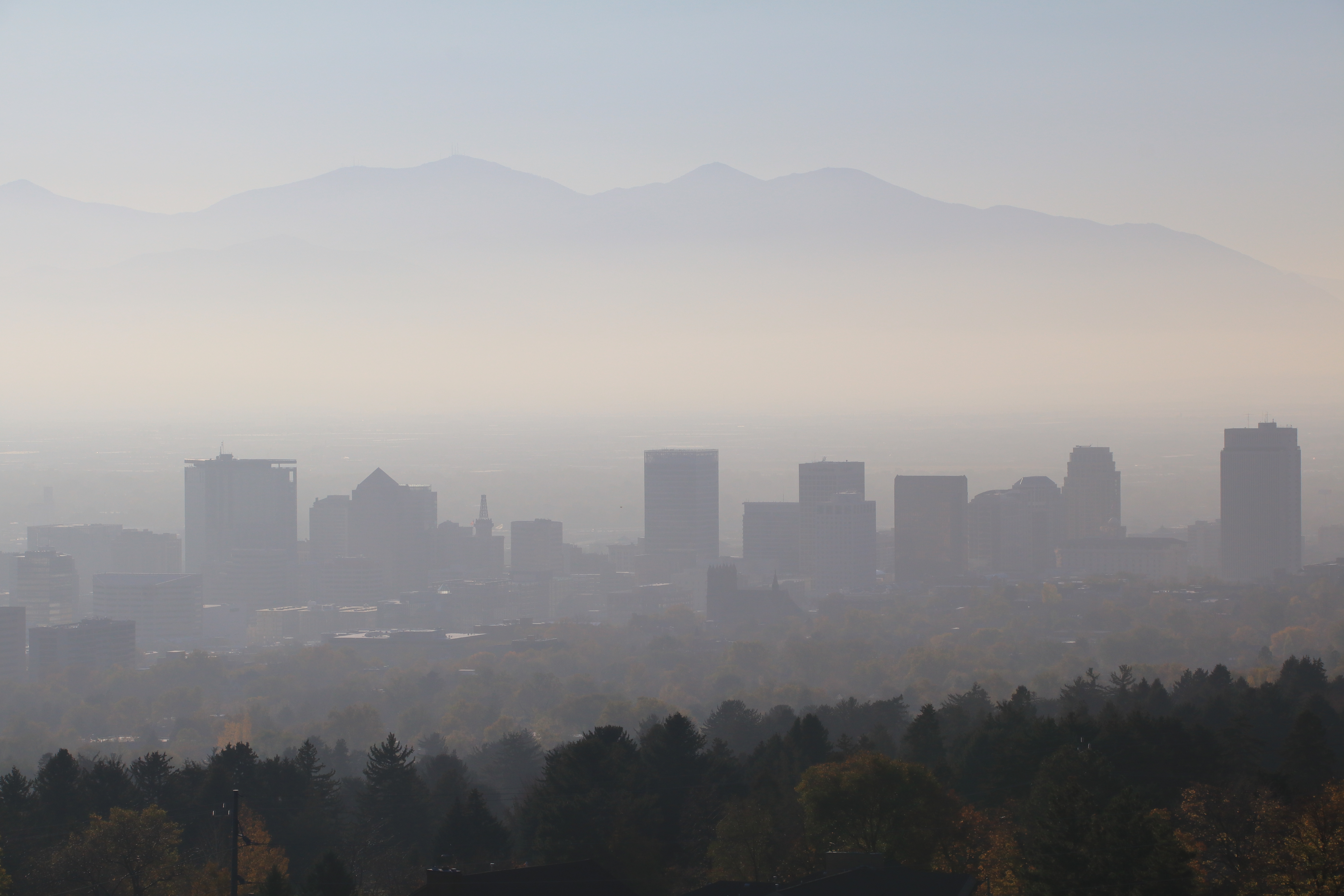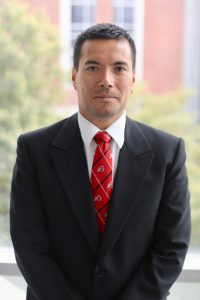
By Maria Archibald, Sustainability Office
As the COVID-19 pandemic continues to disproportionately harm people of color and low-income communities, it becomes increasingly clear that disease does, in fact, discriminate.
Dr. Daniel Mendoza, a visiting assistant professor in the University of Utah’s Department of City &  Metropolitan Planning; research assistant professor in the Department of Atmospheric Sciences; adjunct assistant professor in the Pulmonary Division at the School of Medicine; and senior scientist at the NEXUS Institute, has spent his career studying the underlying inequities that cause health outcomes to fall along sociodemographic lines. “These differences are real—they’ve been there the whole time,” Mendoza says. “They’ve just surfaced and become much more obvious now.”
Metropolitan Planning; research assistant professor in the Department of Atmospheric Sciences; adjunct assistant professor in the Pulmonary Division at the School of Medicine; and senior scientist at the NEXUS Institute, has spent his career studying the underlying inequities that cause health outcomes to fall along sociodemographic lines. “These differences are real—they’ve been there the whole time,” Mendoza says. “They’ve just surfaced and become much more obvious now.”
In his upcoming Global Change & Sustainability Center talk, “The Confluence of Air Quality, Urban Development, Health, and Social Justice,” Mendoza will share his research on an important question: how does the built environment influence human health?
Mendoza, who received his Ph.D. in atmospheric sciences, originally planned to continue studying carbon dioxide emissions and climate change mitigation in urban settings. However, shortly before completing his doctorate, he had a realization that altered the path of his career: “Here in the U.S., unfortunately, about 50% of people believe in climate change,” he says. “But 100% believe in lung cancer.”
Resolved to approach his air quality and pollution research from a human health standpoint, Mendoza pursued a post-doctoral fellowship in public health. As he studied and mapped the health impacts of fine particulate matter, he noticed that differences in the built environment, combined with the sociodemographic factors that influence population distribution, caused certain communities to be more affected by pollution than others.
“That’s when I saw that there are significant differences, and really very close associations between income, race and pollution sources,” he says.
Low-income communities and communities of color are disproportionately exposed to emitting sources like highways, factories, and trains, Mendoza points out, and they also tend to have reduced access to vital resources like nutritious food, public transportation and healthcare services.
“This is how I started to get into the social justice, environmental justice sides,” Mendoza says. “Because I was able to see there are geographical differences.”
In Salt Lake County, for example, low-income communities are more likely to be located in food deserts and less likely to have access to public transportation than their affluent counterparts. Mendoza explains that all the major hospitals are on the east side, and that this—combined with reduced access to public transportation—poses a real problem for low-income residents of West Salt Lake County. Even for those with insurance, healthcare can be difficult to access.
Mendoza explains that these inequities in the built environment affect every aspect of peoples’ lives, down to our most basic human needs of sleeping, breathing and eating. Nutritious eating is impeded by food deserts; breathing is disrupted by the polluting sources that border low-income communities. Mendoza goes on to explain that many of these polluting sources are accompanied by noise and inadequate or excessive lighting, which can disrupt peoples’ sleep patterns.
Inequities in the built environment pre-date the pandemic, but these problems—such as exposure to poor air quality—can result in more severe cases of COVID-19. The pandemic has only illuminated the underlying inequities that cause differential health outcomes to fall along sociodemographic lines, Mendoza says.
While the pandemic would recede more quickly if we all stayed home, Mendoza notes that not everyone has that option. Some jobs, such as stocking a grocery store and working a cash register, can’t be done remotely. “What happens here is there’s this whole set of vulnerable populations, and these are the lower income populations that are forced to work and to go and be exposed to the virus,” he says. As a result, low-income communities have experienced COVID-19 at ten times the rate of their more affluent counterparts.
He objects to the euphemism of “essential” workers. “I think we should be really honest, because the rest of us are actually benefiting from their work. We really are treating them as expendable workers.”
Mendoza acknowledges that these problems have always been there and that they’re here to stay—until we find solutions to them. He encourages the university community to take advantage of the intellectual resources available to uncover solutions.
“What we all need to do, is we need to really strive toward developing equitable societies,” Mendoza says. “Every research branch, every field of study has elements of equity. Everything can really be shaped, or at least have a component of ‘how can this make the world a better place for everyone?” Join Mendoza online October 13 at 4pm at https://utah.zoom.us/j/95107442894?pwd=b0NNNE1rUnI5WmRiMGpMVHBMSGViQT09 to learn more about the intersection between urban environments and health disparities, and how we can all play a role creating more equitable societies.
